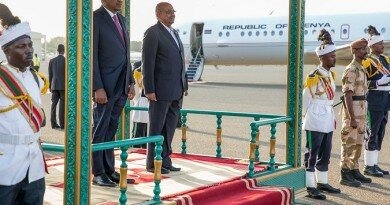Kenya seeks Ksh11.4 billion to tackle drought
By Samuel Musita/Margaret Kalekye
The number of people in need of relief assistance has doubled from 1.3 million in August 2016 to close to 3 million currently.
300, 000 of these people are in non-ASAL areas and this represents about 20 per cent of the population in pastoral areas and 18 per cent in marginal agricultural areas.
The worst affected are the elderly, the sick, children under five years and mothers.
In his weekly press briefing Sunday, Statehouse spokesperson, Manoah Esipisu said the nutrition situation is extremely critical with acute malnutrition levels of above 30 per cent in Turkana, Turkana North, Mandera, Marsabit and North Horr.
In addition, critical levels of malnutrition have been recorded in Baringo East, Isiolo, and the rest of Turkana.
He says the government currently needs 11.4 billion shillings for the second stage of drought mitigation which will be carried out in the months of February and April.
The government had allocated KSh 5.4 billion in the first stage of drought mitigation interventions the period covered November 2016-January 2017.
According to State House, for the second phase of drought mitigation, which covers February-April, an additional KSh 11.6 billion is required and for Phase Three between April-August another KSh 7.1 billion will be required.
“Towards this the government has allocated KSh 7.3 billion already and that leaves a gap of KSh 11.4 billion, which the government is also mobilizing”.
“Kenya convened a meeting with international partners last week as part of enhanced efforts to mobilise these additional resources to focus on mitigating the effects of drought and we can already report a tremendous positive response to this. The relevant government departments will be giving a brief on this in due course”.
He appealed to Kenyans and partners to step in and help the government bridge the deficit to enable it tackle the drought situation.
“All Kenyans of goodwill are also doing whatever they can to help those affected. Only on Friday, the Centum Group gave President Kenyatta a cheque for KSh 22 million towards this goal and we do expect others to follow”.
The said the government prefered that 50% of its mitigation is done through cash transfers which enables people to have purchasing power to decide what it is that they want to eat and that gives them greater sense of dignity.
”The other 50% especially the most needy areas food relief will go as matter of urgency and as first point of intervention” he said.
Livestock
Esipisu noted that livestock prices are falling as a result of vegetation deficit.
“Goat prices in December were up to 25 per cent below their five-year averages. So livestock is being affected in these communities where drought is ravaging”.
He warned that food prices across the country would increase further due to below average production in 2016.
“Current prices are 10–25 per cent above their five-year averages and will probably rise further”, he explained.
President Uhuru Kenyatta recently declared the drought a national disaster and a formal Kenya Gazette notice will be published to this effect.





